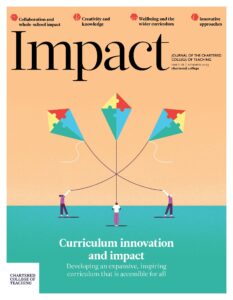Developing sociolinguistic competence to become stronger intercultural communicators: The impact of an interview series on secondary girls in a world language classroom
Written by: Erin Prada

8 min read
ERIN PRADA, URSULINE ACADEMY, USA
Introduction
Intercultural skills are essential for success in today’s increasingly and evermore globalised world. Connection and collaboration with others who are culturally and linguistically diverse is a regular occurrence, compelling educators to ensure their classrooms reflect these realities. Students must have ample opportunity to develop the type of knowledge, skills and awareness collectively identified through Byram’s (2020) model of intercultural communicative competence (ICC). Comprised of communicative competence and intercultural competence, ICC proves to be a dynamic skill set that encompasses both explicit and implicit aspects of successful cross-cultural interaction (Byram, 2020). Byram's (2020) model includes linguistic, sociolinguistic and discourse competence, knowledge and skills relating to interpretation and discovery, as well critical cultural awareness with an open and curious attitude. ICC recognises language is inherent
Join us or sign in now to view the rest of this page
You're viewing this site as a guest, which only allows you to view a limited amount of content.
To view this page and get access to all our resources, join the Chartered College of Teaching (it's free for trainee teachers and half price for NQTs) or log in if you're already a member.
- Andreeva I (2016) Teaching culture through social situations in English as a second language classes. Master’s Thesis, University of San Francisco, USA.
- Azimova S (2019) The communicative approach in English language teaching. Bulletin of Science and Practice 5(4): 471–475.
- Byram M (2020) Teaching and Assessing Intercultural Communicative Competence: Revisited, 2nd ed. Bristol: Multilingual Matters.
- Canagarajah S (2016) TESOL as a professional community: A half-century of pedagogy, research, and theory. TESOL Quarterly 50(1): 7–41.
- Canale M and Swain M (1980) Theoretical bases of communicative approaches to second language teaching and testing. Applied Linguistics 1(1): 1–47.
- Dewaele JM, Macintyre P, Boudreau C et al. (2016) Do girls have all the fun? Anxiety and enjoyment in the foreign language classroom. Theory and Practice of Second Language Acquisition 2(1): 41–63.
- Djafri F and Wimbarti S (2018) Measuring foreign language anxiety among learners of different foreign languages: In relation to motivation and perception of teacher’s behaviors. Asian-Pacific Journal of Second and Foreign Language Education 3(1): article 17.
- Holmes J and Brown DF (1976) Developing sociolinguistic competence in a second language. TESOL Quarterly 10(4): 423–431.
- Horwitz EK, Horwitz MB and Cope J (1986) Foreign language classroom anxiety. The Modern Language Journal 70(2): 125–132.
- Koran E (2016) Assessment of EFL learners’ sociolinguistic and pragmatic competence and performance. Journal of Education in Black Sea Region 1(1): 45–53.
- Regan V and Bayley R (2004) Introduction: The acquisition of sociolinguistic competence. Journal of Sociolinguistics 8(3): 323–338.
- Santos A, Gorter D and Cenoz J (2017) Communicative anxiety in the second and third language. International Journal of Multilingualism 14(1): 23–37.
- Savignon SJ (2018) Communicative competence. In: Liontas JI (ed) The TESOL Encyclopedia of English Language Teaching. Hoboken, NJ: Jon Wiley & Sons, pp. 1–7.
- Young RF and Lee J (2004) Identifying units in interaction: Reactive tokens in Korean and English conversations. Journal of Sociolinguistics 8(3): 380–407.
0
0
votes
Please Rate this content
Subscribe
Please login to comment
0 Comments
Oldest
Newest
Most Voted
Inline Feedbacks
View all comments










